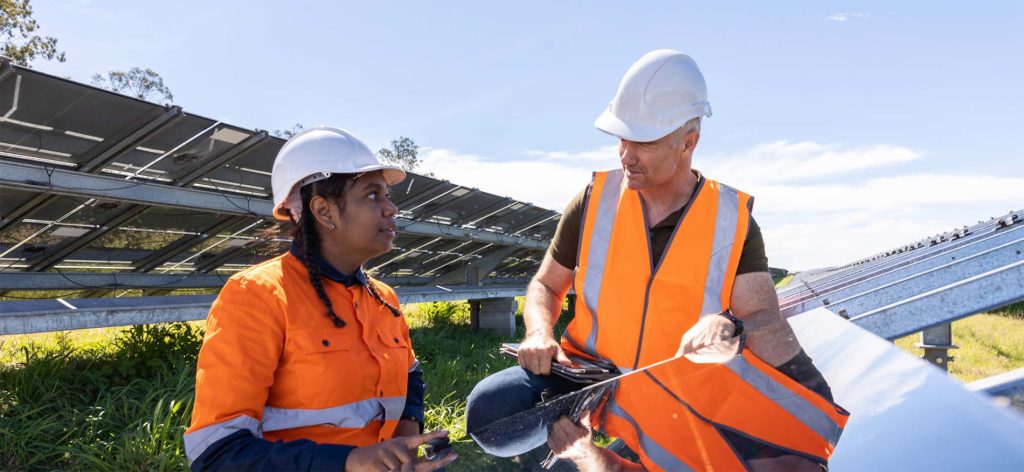Insights on utilities’ labour market 2022-2025: An industry snapshot series
As an extension of our recent update on unemployment and recruitment trends in Australia, we’ve expanded on our analysis to investigate trends specifically related to the utility industry. Below is a short snapshot of the current utility recruitment trends: SEEK job ads in the engineering and construction sectors have grown by 30.6% and 21.1%, respectively,…
As an extension of our recent update on unemployment and recruitment trends in Australia, we’ve expanded on our analysis to investigate trends specifically related to the utility industry.
Below is a short snapshot of the current utility recruitment trends:
- SEEK job ads in the engineering and construction sectors have grown by 30.6% and 21.1%, respectively, in recent months
- Demand for labour in the utility industry is expected to be over two-thirds greater than in the previous five years
- Candidate availability is low across all utility sectors
- The Civil Engineering occupation group grew by 22% between March and June 2022, making it one of the top 10 growing occupation groups reported by Indeed
Our previous update outlined how employers will continue to encounter a candidate short market for another two years before market conditions change. Along with the candidate shortage, there are specific employment market challenges that utility businesses should consider while planning their workforce. You can contact our specialist recruiters here for labour market advice specifically tailored to your business.
Environmental factors drive change within utility sectors
As Australia makes the shift from fossil fuel energy production to renewable energy sources, the power sector will see profound change, and an increase in the demand for labour to coincide with it. Other utility sectors will experience a flow-on effect from this increase in demand for labour as they compete with an increasing number of roles in the power sector to attract talent.
Large-scale renewable energy projects will see the largest increase in employment demand, with demand increasing from approximately12,000 employees in 2022, to 22,000 in 2025. Whilst the demand for labour in the coal and gas sector is projected to decline during this period, this will only be by approximately 1,000 employees, and not enough to ease recruitment pressure on utility businesses as a result of expansion in the renewables sector.
Overall, the power sector is projected to grow by 11,000 people over the next three years. However, power is not the only sector that is forecasting large labour growth. In the water sector, employment is expected to grow from 35,000 in 2022 to 38,300 in 2025, placing increased labour pressure on the larger utility industry.
According to the National Skills Commission, science, technology, engineering, and maths (STEM) roles will experience the largest growth over the next three years at 12.9%. Occupation groups that will grow the largest are professionals and managers, who will grow at 14.7% and 9.2%, respectively. Lower growth will however be seen in labourers (6.9%) and technicians & trades (6.1%).
As a result, and dependent on future projects, expect your workforce to be composed of a higher proportion of engineers, professionals and managers in three years’ time, and tailor your candidate attraction strategies to win talent for these positions over your competition.
Increasing gender diversity to overcome labour shortages
The utility industry is a traditionally male-dominated industry, and even in 2022, women only account for 22% of the industry’s workforce. The gender imbalance in utilities is a result of inadequate pathways into the industry and an insufficient focus on retention strategies with women in mind.
Addressing the gender disparity in the utility industry will be critical in overcoming labour shortages over the next three years, particularly across the engineering, professionals, and management occupation groups where the impact of labour shortages will be more pronounced.
To source female utility professionals for your business, take advantage of government programs that aim to increase female participation in the industry, and invest time in training female new starters. In addition to this, it’s essential to make your organisation a place where women want to work. To do so, ensure that your workplace is free of gender biases and stereotypes, and that your female employees have the same career opportunities as their male counterparts. Additionally, it is essential to ensure work sites have adequate facilities for female workers.
The aging utility workforce
Due to the nature of the roles in the industry, utility workers tend to retire young when compared with other industries. Consequently, the impacts of Australia’s aging population are exacerbated in the industry. Over the next 15 years, it’s estimated that over 40% of the industry’s workforce will be lost to early retirement. To prepare for this, ensure that your business has a pipeline of young talent that is ready to step up into senior roles as older employees retire.
Workers who are closer to retirement are likely to fill specialist, senior and technical roles, which are predicted to have the highest demand over the next three years. Project management roles in particular are at a high risk of being impacted by the aging population, with over half of the workforce aged over 45 years old. To mitigate the risks of an aging population, invest in training and upskilling your workforce so that existing employees can fill senior roles as older staff retire.
If you’d like to discuss the utility labour market in further detail with one of our specialist consultants, fill out the form on this page and we’ll be in touch.
Sources: SEEK; SEEK Industry Insights Construction, 2022; SEEK; SEEK Industry Insights Engineering, 2022; National Skills Commission, Projecting employment to 2025, 2022; Hiring Lab, July 2022 Australian Labour Market Update: Not Slowing Down Yet, 2022; Infrastructure Australia, Infrastructure Market Capacity, 2021; Australian Industry and Skills Committee, Utilities, 2022; Australian Water Association, Boosting women’s participation in the utilities sector, 2021.







